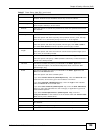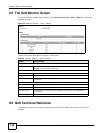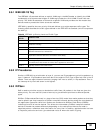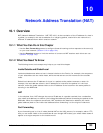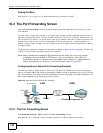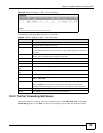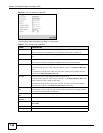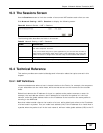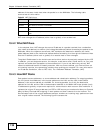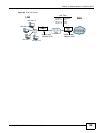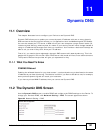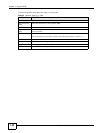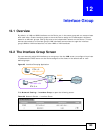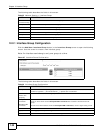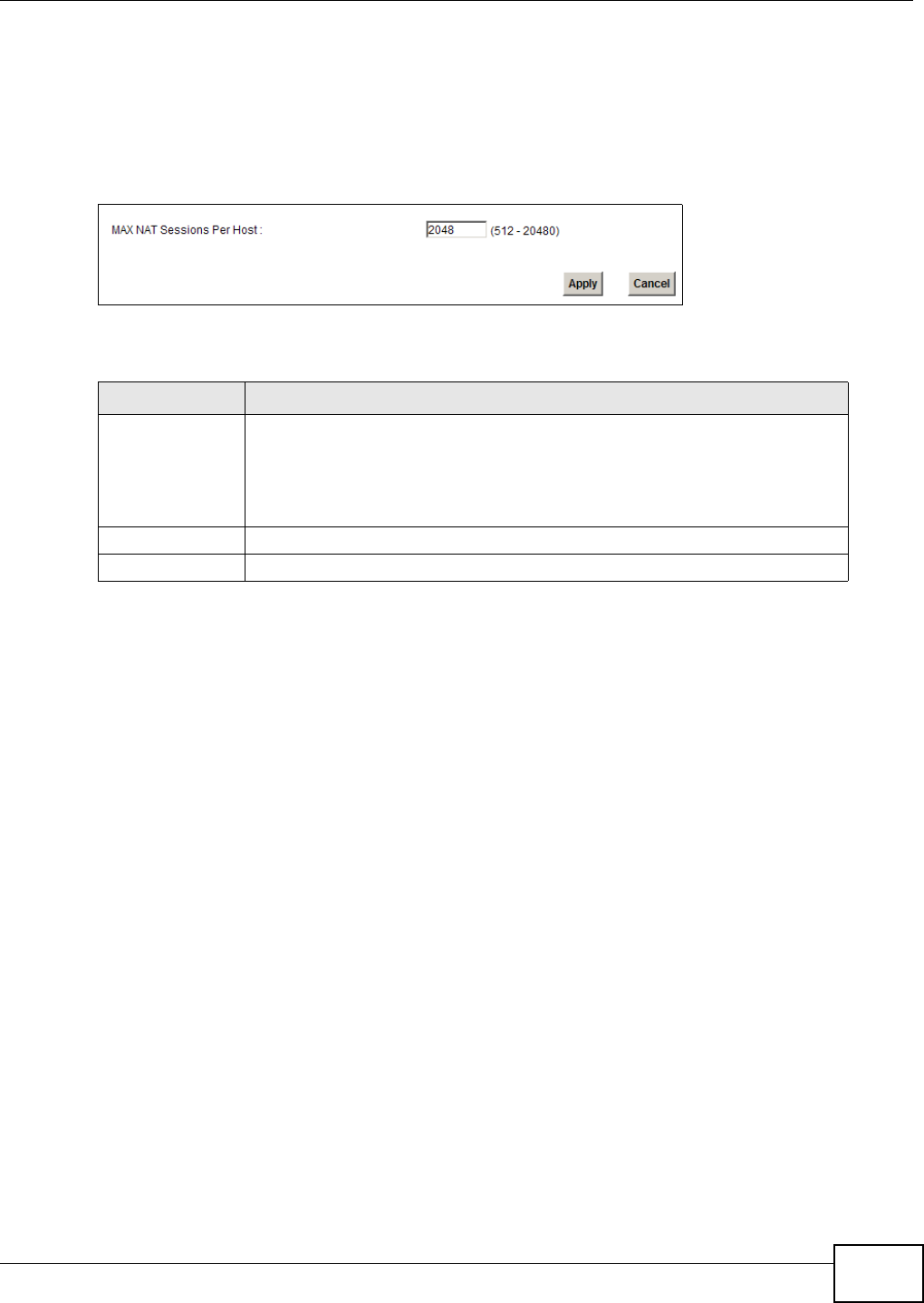
Chapter 10 Network Address Translation (NAT)
FMG3024-D10A / FMG3025-D10A Series User’s Guide
137
10.3 The Sessions Screen
Use the Sessions screen to limit the number of concurrent NAT sessions each client can use.
Click Network Setting > NAT > Sessions to display the following screen.
Figure 62 Network Setting > NAT > Sessions
The following table describes the fields in this screen.
10.4 Technical Reference
This section provides some technical background information about the topics covered in this
chapter.
10.4.1 NAT Definitions
Inside/outside denotes where a host is located relative to the Device, for example, the computers
of your subscribers are the inside hosts, while the web servers on the Internet are the outside
hosts.
Global/local denotes the IP address of a host in a packet as the packet traverses a router, for
example, the local address refers to the IP address of a host when the packet is in the local
network, while the global address refers to the IP address of the host when the same packet is
traveling in the WAN side.
Note that inside/outside refers to the location of a host, while global/local refers to the IP address
of a host used in a packet. Thus, an inside local address (ILA) is the IP address of an inside host in
a packet when the packet is still in the local network, while an inside global address (IGA) is the IP
Table 32 Network Setting > NAT > Sessions
LABEL DESCRIPTION
MAX NAT Session Use this field to set a common limit to the number of concurrent NAT sessions
each client computer can have.
If only a few clients use peer to peer applications, you can raise this number to
improve their performance. With heavy peer to peer application use, lower this
number to ensure no single client uses too many of the available NAT sessions.
Apply Click Apply to save your changes.
Cancel Click Cancel to restore your previously saved settings.



